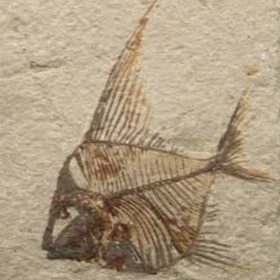Did Winter Cleanse the Flood Water of Excess Salt?
By Carla Estell 2021
Various salts and minerals are found embedded in earth’s strata. Are they evidence of millions of years of slow evaporation, or could they have been formed during the year long Global Flood? Here are a few of the many examples found around the globe:
- Wieliczka Salt Mine in Poland
- Goderich Salt Mine located 1,800 feet under Lake Huron
- Gypsum deposits in Michigan and across the USA
- Halite and Gypsum deposits 800 meters (2,500 feet) deep under the Mediterranean Sea
- hourglass selenite crystals found in north-central Oklahoma
Typically beds of minerals are thought of as evaporates. But, this is due to the long held Uniformitarian belief of the sea and land slowly changing places in a continuous seesaw fashion. Each time the land rose, some sea water was trapped. As the water evaporated, minerals were left behind. When the land lowered the encroaching sea brought in a new layer of sediment which covered the evaporates. Evaporate formation can be demonstrated by placing water saturated with dissolved sea salt on a smooth concave surface and letting the water evaporate. The rings of various salt layers formed by the experiment would be evaporates. But it would have taken long periods of time if the huge salt beds found in the earth were formed by evaporation. The longer time span also means more opportunity for added impurities – which are often missing. From the Flood perspective, precipitation of minerals from the mineral saturated flood waters offers a better explanation.
Separating out Minerals During the Flood
As the rushing floodwater pulverized earth’s land mass, it would have dissolved vast quantities of minerals making the water extremely salty. The hotter the water, the more minerals will dissolve. But these minerals precipitate out as the water cools. When sea ice forms, mineral concentration in the remaining water is increased leading to even greater precipitation. A small scale example of precipitation is seen each winter on the salt plains of northern Oklahoma. As the water freezes selenite crystals form due to the precipitation caused by the high concentration of salt. https://www.fws.gov/refuge/salt_plains/visit/dig.html This can also be demonstrated at home by filling a tall, clear canister with water saturated with dissolved sea salt and placing it in the freezer. As the water cools, the various salts will precipitate to the bottom. Each mineral such as Iron, copper, and manganese along with each type of salt will precipitate at a distinct temperature and concentration level. So as the flood waters cooled, various minerals would have quickly precipitated forming strata or nodules. Whether it was cold currents rushing through warm water or the gradual cooling of the water, precipitation of vast amounts of minerals could have quickly accumulated creating the strata we see today.
Seasons During the Flood
Whether or not there were seasons before the Flood, is up for debate. But, after the Flood, God clearly told Noah that while the earth remained, seedtime and harvest, cold and heat, winter and summer would not cease. With the Flood lasting for an entire year, it is plausible that both poles experienced winter during the Flood. And if so, then this could have reduced the mineral content of the floodwater to its present level of 3.5% and buried those minerals within earth’s strata. Since Earth’s primary heat source is the sun, creating winter is as easy as blocking the sun. Earth’s 23.5 degree tilt does just that. Every year each pole experiences 11 weeks of total darkness and intense cold. Today winter continues to remove excess minerals, algae and pollution from earth’s waters. God’s wisdom and design is clearly seen in the establishment of the seasons by simply tilting the planet.

Find out more …
- About The Estells
- Another possible solution for disharmonious associations in Ice Age deposits
- Articles
- Connecting the Dots
- Contact information
- Creation based VBS
- Creation Resources
- Crinoid Fossils: Evidence of Millions of Years or the Global Flood?
- Did Winter Cleanse the Flood Water of Excess Salt?
- Do Antarctic Fossil Forests Prove Trees Grew near the South Pole?
- Educational Resources
- Fish Fossil
- Fish Fossils
- Geodes: Crystals Hidden Within a Round Rock
- Geology Explained in Terms of Global Flood Recovery
- God’s Forgotten Promise
- Living Fossils
- Making logical sense of earth’s geological column.
- Mount Saint Helens
- Mount Saint Helens
- Petrified Wood
- Petrified Wood
- Post Flood Migration of Mammals
- Printed Letters to the Editor
- Resources
- Reverse Engineering the Grand Canyon
- Seeing God’s Ingenuity in Earth’s Design
- Seminar descriptions with Fliers and Bios
- Seminar Topics
- sliderImages
- Songs and Poems
- Tapirs, Endangered or Hardy Survivors?
- The Demise of the Mammoths
- The Flood
- The launching of our creation ministry
- The Overlooked Flood Stage
- The Rewriting of Paradise
- The Rocks Speak Out
- The Stones’ Story Retold
- The Stones’ True Story
- The Way of Salvation
- Videos
- Was there an Ice Age?
- Whale Falls: Present Key to the Abundance of Sea Invertebrate Fossils

